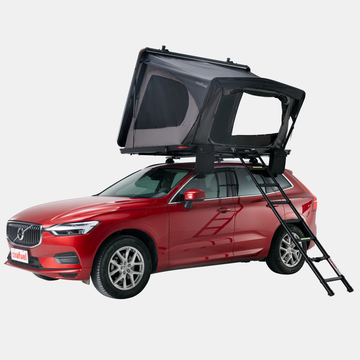
The world's first icebreaker was born about 160 years ago. In winter, some important shipping routes in high-latitude cold regions would become icebound, forcing ships to stop operating. In order to maintain smooth navigation during winter, Russia made early attempts at icebreaking. The early icebreaking tools were small boats dragged onto the ice-covered routes by manpower or animals. They would then pile up heavy objects like stones and ice blocks on the boats to increase their weight and crush the ice surface. However, these small boats without mechanical power had limited icebreaking capabilities. It was these primitive icebreaking methods that inspired the birth of icebreakers. In 1864, Russians converted a small steamship into the world's first icebreaker, becoming the "pioneer" of opening up icebound routes during the winter navigation season. After the introduction of this icebreaker, other countries with similar requirements for icebound navigation began building their own icebreakers. By the end of the 19th century, countries in high-latitude regions had their own icebreaker fleets. Presently, Russia has the world's largest icebreaker fleet, while Finland, also located in high-latitude regions, has the richest experience in icebreaker design.
During World War II, the British faced German submarine blockades in the North Sea, and the Soviet Union, in order to break the blockade, also manufactured these types of vessels, which could transport supplies along the Arctic route. Modern icebreakers have a hull made of thick steel plates at the bow, supported by dense structural steel components on the inside. When encountering thin ice, the icebreaker can simply use its full power to crush and clear a path. When faced with ice that cannot be continuously traversed, a continuous impact method is employed: the ship slightly reverses and then charges forward with full force, repeating this process to create a passage.
The Arctic region is home to many specialized animals adapted to the cold environment, such as polar bears, Arctic foxes, seals, and beluga whales. Theyrely on the Arctic ice for their survival. The melting of the Arctic ice poses a significant threat to their habitats and food sources. Polar bears, for example, depend on the sea ice to hunt seals, their primary prey. With the reduction of sea ice, polar bears have to swim longer distances to find food, leading to increased energy expenditure and decreased reproductive success.
The loss of sea ice also affects the feeding patterns of marine mammals, such as seals and whales. Ringed seals, for instance, create breathing holes in the sea ice to access the water and hunt. With the decline in sea ice, their ability to create these holes is reduced, impacting their ability to find food and evade predators.
The melting Arctic ice also has implications for global climate patterns. The reflective nature of the ice helps to cool the planet by reflecting sunlight back into space. However, as the ice melts, the dark ocean surfaces absorb more sunlight, leading to further warming and contributing to the global climate change.
Efforts are being made to mitigate the impact of climate change in the Arctic region. International agreements, such as the Paris Agreement, aim to reduce greenhouse gas emissions and limit global warming to well below 2 degrees Celsius above pre-industrial levels. Additionally, there are initiatives to establish protected areas in the Arctic to conserve its unique ecosystems and biodiversity.
In conclusion, the Arctic ice cap is melting at an accelerated rate due to climate change. This melting has opened up opportunities for archaeological research and scientific exploration in the Arctic region. However, it also poses significant challenges to the environment, wildlife, and global climate. Continued efforts to address climate change and protect the Arctic ecosystem are essential to mitigate the impacts of melting Arctic ice.





